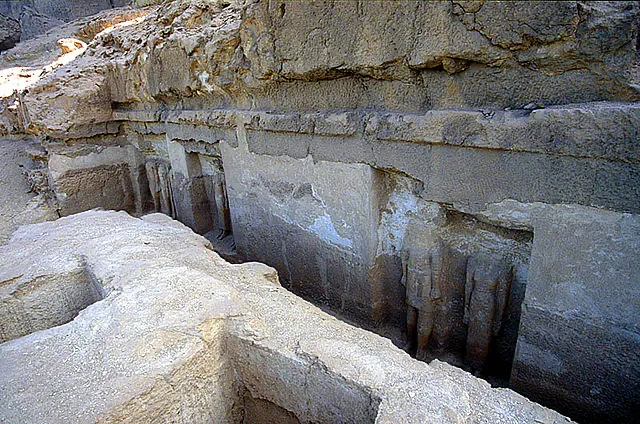The Fraser Tombs, also known as the Tombs of the Nobles, are a collection of ancient burial chambers. They are located in the Moqattam hills near Cairo, Egypt. These tombs date back to the Old Kingdom and the First Intermediate Period. They are significant for their detailed inscriptions and architectural style. The tombs provide insight into the lives of the non-royal elite of ancient Egypt. They were discovered in the mid-19th century by British Egyptologist George Fraser.
Get your dose of History via Email
Historical Background of Fraser Tombs
The Fraser Tombs are a series of ancient Egyptian burial sites. They were discovered in 1853 by George Fraser, a British Egyptologist. The tombs date back to the Old Kingdom and the First Intermediate Period. They were built for high-ranking officials, not for pharaohs. These officials served the kings of the 4th and 5th Dynasties. The tombs are known for their detailed inscriptions and unique architectural features.
These tombs were constructed with limestone and adorned with intricate carvings. They depict various aspects of Egyptian life and the afterlife. The inscriptions provide valuable information about the beliefs, customs, and daily activities of ancient Egyptians. Over time, the tombs became neglected and were covered by sand until their rediscovery.
After their discovery, the Fraser Tombs became an important site for Egyptologists. They offered a glimpse into the lives of those who served the pharaohs. The tombs have been studied extensively since their unearthing. They have provided a wealth of knowledge about ancient Egyptian society and governance.
While the tombs were primarily used for burials, they also served as a place for the living. Families of the deceased would visit to perform rituals and offer sacrifices. This practice ensured the well-being of the departed in the afterlife. The tombs also became a place of pilgrimage for those seeking blessings from the spirits of the noble dead.
The Fraser Tombs have not been the scene of any historically significant events. However, they remain a testament to the craftsmanship and beliefs of ancient Egyptians. They continue to be a site of archaeological interest and study. The tombs are a valuable resource for understanding the complexities of ancient Egyptian society.
About Fraser Tombs
The Fraser Tombs are a series of rock-cut tombs. They are located on the edge of the desert plateau. The tombs are carved into the limestone cliffs of the Moqattam hills. They overlook the ancient city of Memphis, which was the capital of Old Kingdom Egypt.
The tombs are notable for their false doors and offering tables. These features were believed to be conduits between the living and the dead. The walls of the tombs are adorned with reliefs and paintings. They depict scenes of daily life, agricultural activities, and religious rituals.
The construction of the Fraser Tombs involved cutting into the limestone bedrock. This created chambers and shafts for the burial of the deceased. The tombs were designed to ensure the comfort of the dead in their journey to the afterlife. They included storerooms for grave goods and offerings.
Architectural highlights of the Fraser Tombs include mastabas and chapels. Mastabas are flat-roofed, rectangular structures with sloping sides. They were built above the subterranean burial chambers. Chapels were used for the performance of funerary rites and offerings.
The building materials used for the Fraser Tombs were primarily local limestone. This was sourced from nearby quarries. The choice of material and the style of the tombs reflect the status and wealth of the individuals buried within them.
Theories and Interpretations
The Fraser Tombs have been the subject of various theories and interpretations. One theory suggests that the tombs were designed to reflect the social hierarchy of ancient Egypt. The size and complexity of a tomb correlated with the status of the individual.
Some mysteries surround the Fraser Tombs, particularly regarding the inscriptions. Researchers have worked to match these to historical records. This has helped to identify the occupants and their roles in society.
The use of the Fraser Tombs has been interpreted through the artifacts and inscriptions found within. These suggest that the tombs were not only for burial but also for the commemoration of the deceased’s life.
Dating of the Fraser Tombs has been carried out using various methods. These include stylistic analysis of the inscriptions and reliefs. Radiocarbon dating has also been used to determine the age of organic materials found within the tombs.
The interpretations of the Fraser Tombs continue to evolve. As new discoveries are made, our understanding of these ancient burial sites deepens. They remain a focus of ongoing research and scholarly debate.
At a glance
Country: Egypt
Civilization: Ancient Egyptian
Age: Old Kingdom and First Intermediate Period (approximately 2686–2181 BC)

